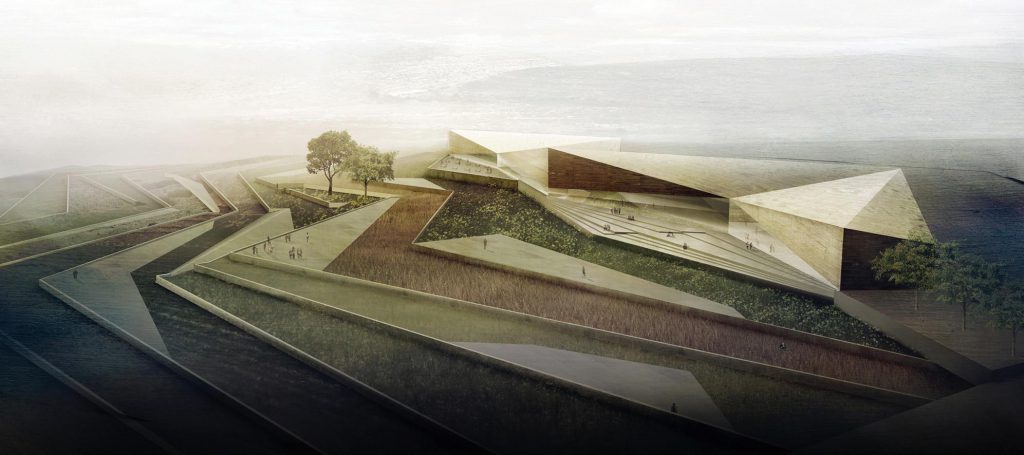
By Saleh S. Matar
“It is from the perspectives of art and culture…that we find some hope,” said the organizers of Qalandiya International, a biennial event that takes place across Palestinian cities, towns and villages that focuses on showcasing contemporary Palestinian art, history and culture.
Echoing this powerful sentiment, a revolutionary project that promises to showcase Palestinian culture, heritage, art and history on a global scale, will soon come to fruition atop the rolling hills of Berzeit, just outside the West Bank city of Ramallah.
First proposed nearly 15 years ago, The Palestinian Museum aims to preserve and celebrate “the tangible and intangible culture of modern Palestine and its people…and will strive to be a place that brings together an innovative mix of exhibitions, research, and education programs, and a space for inspiration, reflection, and dialogue,” according to Omar Al-Qattan, the Chairman of the Palestinian Museum Task Force.
Designed by Heneghan Peng – the Dublin-based firm behind the Grand Museum of Egypt in Cairo – the museum is set to open in 2015 and will be the largest museum to house Palestinian art, culture and identity. The institution also breaks away from the usual museum format through its revolutionary concept to establish itself as a “museum without borders” and communication hub for about 10 million Palestinians across the globe.
“This museum is more focused on connecting Palestinians who cannot reach the site,” said Jack Persekian, the museum’s director and curator. “What’s special about this is it’s not focused on a physical -presence in Birzeit, but on the network it will open in the world where different backgrounds and affiliations create a more tolerant image of Palestinians.”
Aside from the Museum’s intellectual aspirations, the physical structure of the museum is proving to be just as ingenious.
Constructed in two phases, the building’s first phase will span 3000 square meters and cost about $15 million. It will include “climate-controlled galleries, an amphitheatre and a cafe in addition to gardens and orchards representing local topography.” The second phase will see the museum expanding to 10,000 square meters and will include more gallery space for temporary and permanent exhibitions, a library, auditorium and additional classrooms.
The building will also be the first LEED certified green building in Palestine and will serve as an “educational case-study to deliver training workshops to engineers, contractors, university students and other professionals” on environmental sustainability, according to engineer Badawi Qawasmi, a founding member of the Palestine Green Building Council.
Currently inviting Palestinians across the globe to participate in its opening show, Never Part, the museum highlights the importance of preserving culture, heritage and art in a way that goes beyond simply collecting interesting pieces to place in a room. It is an innovative way to collect and celebrate memories that allows the people from around the world to look back at the history of the Palestinian people and serve as an entity of hope to look forward to the future as well.



















Cool!
“museum without borders” i impress by this article